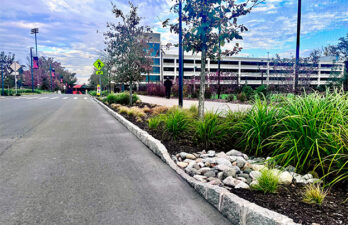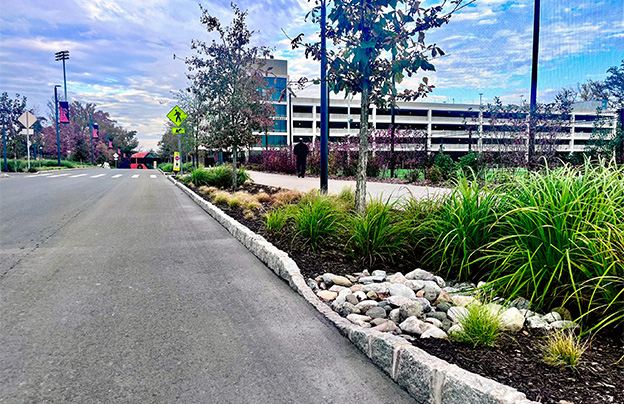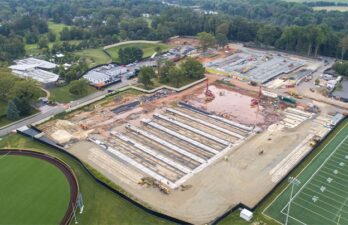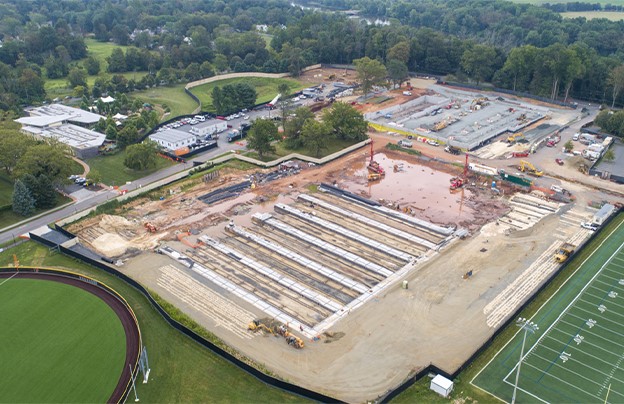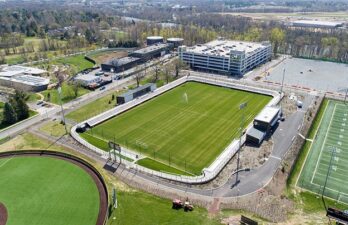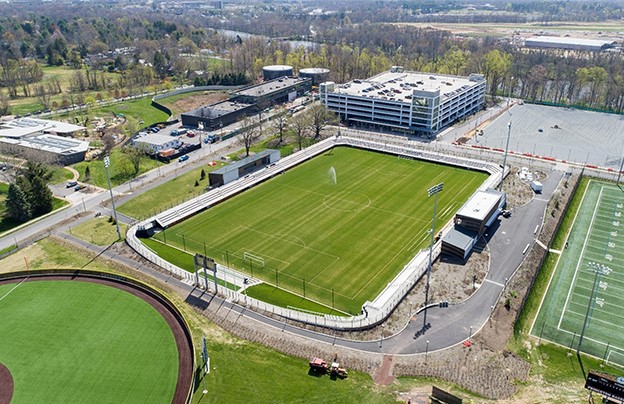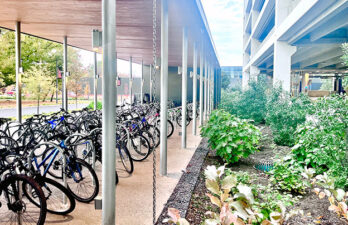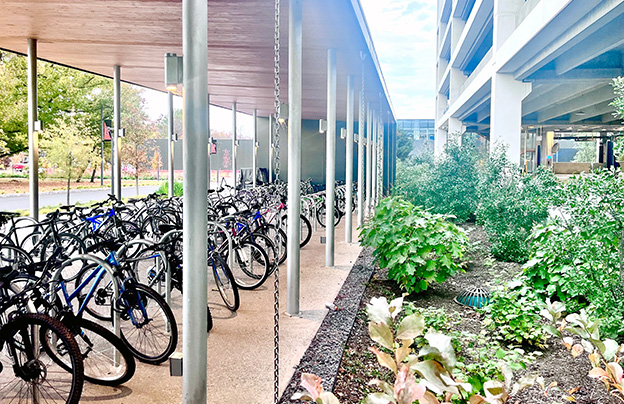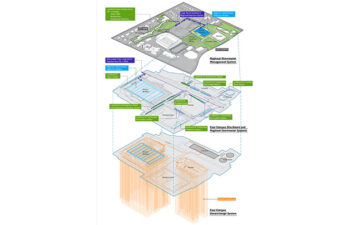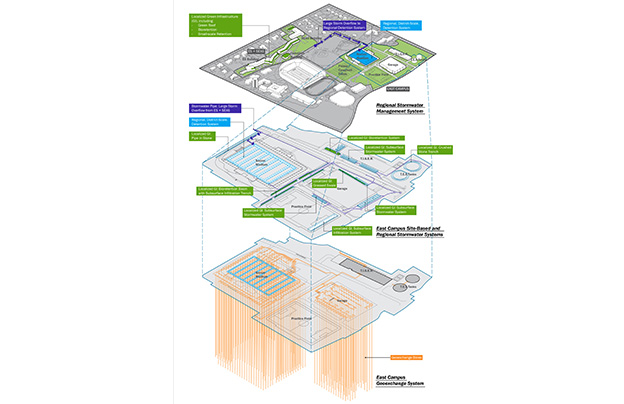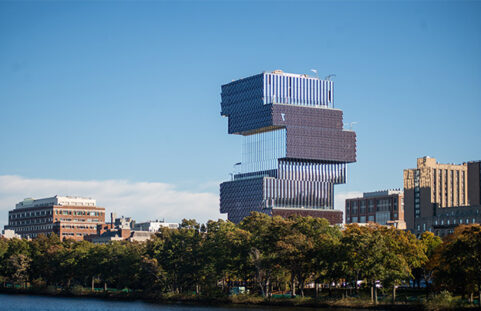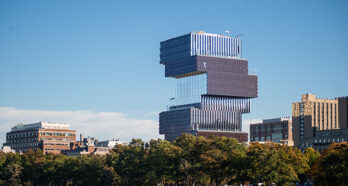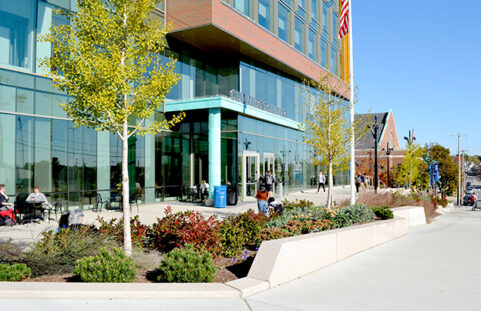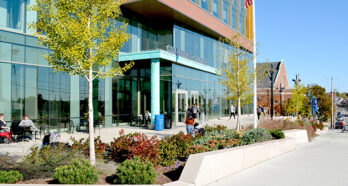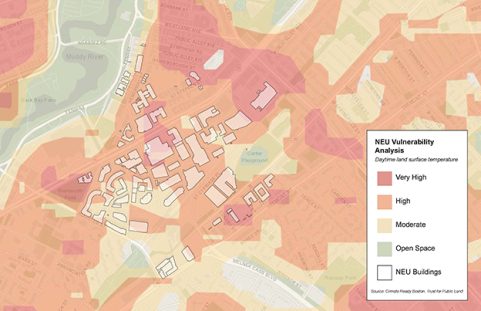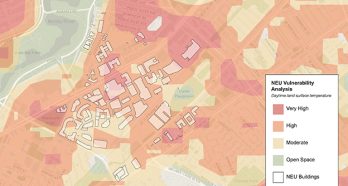For decades, Princeton University has been at the forefront of sustainability in higher education, implementing aggressive sustainability practices and using their campus as a test bed for innovative approaches and technologies to combat the effects of climate change. As part of campus-wide planning efforts, Princeton – in collaboration with Nitsch Engineering – has developed a comprehensive approach for managing stormwater on campus by combining dispersed, localized green infrastructure with regional, or district-scale, strategies to provide centralized flood storage for large storm events in anticipation of climate change. Through a coordinated and integrated planning process, Princeton developed the 2026 Campus Master Plan (CMP), Infrastructure Master Plan (IMP), and the Sustainability Action Plan. The Sustainability Action Plan identifies long-term sustainability goals for the campus, including achieving net zero carbon emissions and providing enhanced stormwater management. The 2026 CMP/IMP leverages Princeton’s growth as an opportunity to accelerate towards the Sustainability Action Plan’s aggressive goals.
Through the 2026 CMP/IMP, Princeton recognized an opportunity to expand and redevelop the areas now known as the East and Lake Campuses, while using development projects on these campuses to advance broader sustainability goals identified as part of the Sustainability Action Plan. To assist Princeton in this initiative, Nitsch provided stormwater planning and engineering services to support the redevelopment of the East Campus, which includes the redevelopment of a former parking lot into a new soccer stadium, a soccer practice field, a parking garage, and a building known as “T.I.G.E.R.” (Thermally-Integrated Geo-Exchange Resource central utility building).
We performed a district-scale planning study for the East Campus that called for managing stormwater using a series of localized green infrastructure practices dispersed throughout the 22-acre site, as well as a centralized, regional location for large storm flood mitigation beneath the soccer stadium. This regional stormwater system provides enough additional capacity to address water quality and peak rate mitigation, and substantially reduce the amount of stormwater discharge in flood events and large storms for the East Campus as well as an additional eight acres of planned upstream development within the watershed.
The soccer stadium is also the site of an innovative, large-scale, geo-exchange system – combining two major resilient infrastructure systems in one location. Co-locating these systems meant “stacking” the systems – a complex design approach that required an intensely collaborative process between Nitsch and the geothermal and M/E/P engineers. This system serves as a model for optimizing open space and leveraging redevelopment opportunities to meet aggressive resilience and net zero goals.
The East Campus stormwater facilities, and the soccer stadium in particular, are a testament to the project team’s innovation and commitment to going above and beyond “engineering as usual” to develop solutions that optimize the capacity of every single development project, harness the power of campus open space to be high-performance areas that support Princeton’s aggressive resilience goals for enhanced stormwater management, and bring Princeton closer to their primary goal of achieving net zero carbon emissions by 2046.
Nitsch Engineering’s work as stormwater planners and engineers on this project was exemplary in their creative and collaborative approach to a complex and transformative redevelopment project.
Ron McCoy, University Architect, Princeton University
Key Collaborators
Owner: Princeton University
Overall Architect of Record: Skidmore, Owings & Merrill
Architect of Record for Soccer Stadium and Practice Field: Sasaki
Architect of Record for the T.I.G.E.R. and Garage Buildings: ZGF Architects
Design Architect for Garage Building: Tim Haahs
Landscape Architect: Field Operations
Geothermal Designer: Salas O’Brien Company
Mechanical/Electrical/Plumbing (M/E/P) Engineer: Burns & McDonnell

